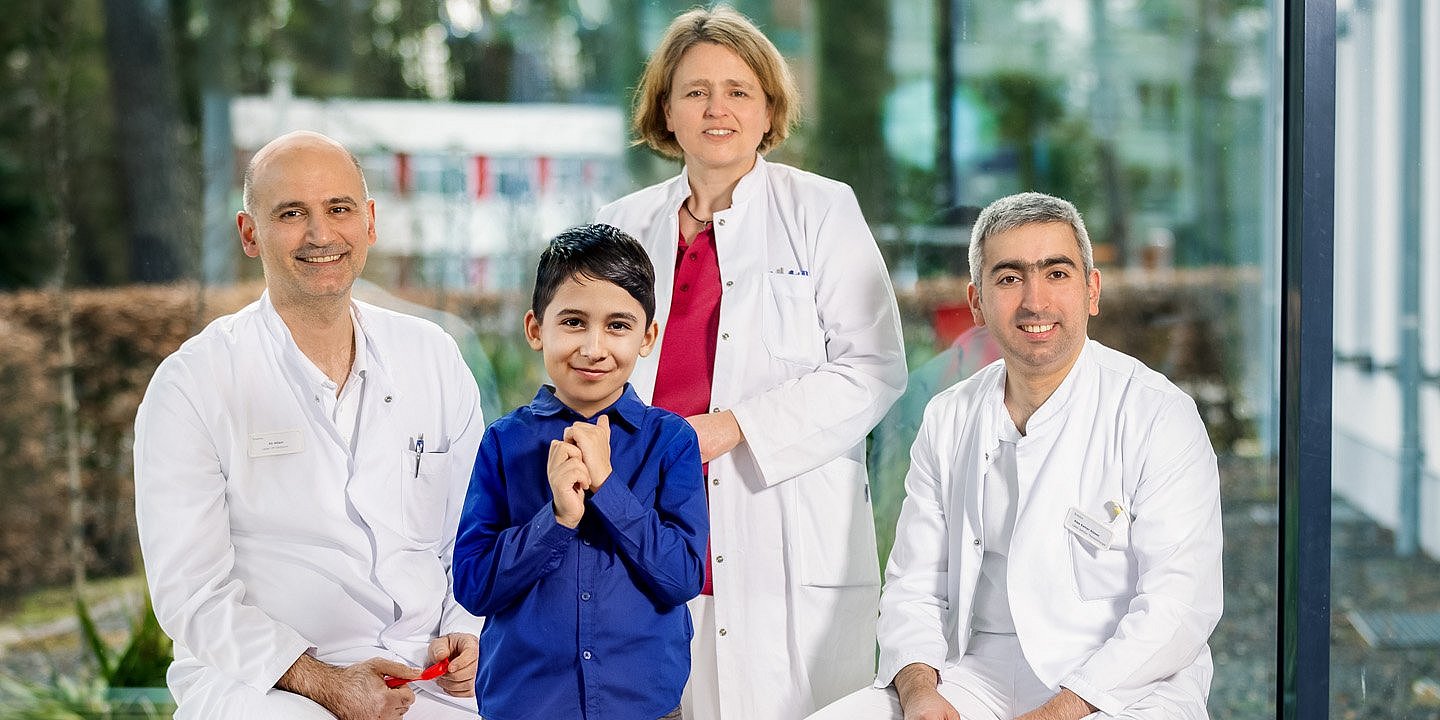
Helios Hospital Bad Saarow: The dog tapeworm - small and dangerous!
On January 11, 2023, a rare lung operation was performed very successfully on a child at the Helios Hospital Bad Saarow. After intensive interdisciplinary preparation by physicians from pediatric surgery, anesthesia and thoracic surgery, a large fluid-filled cyst caused by an infection with dog tapeworms was removed from the lungs of seven-year-old Denislav.
A severe cough and pain in the left lung plagued seven-year-old Denislav when he was admitted to the Clinic for Pediatric and Adolescent Medicine at Helios Hospital Bad Saarow shortly before Christmas 2022. His parents, who live in Frankfurt/Oder, were very worried. Everything pointed to pneumonia, and X-ray and sonography findings showed water in the lungs (pleural effusion), but intensive therapy using oxygen supplementation, antibiotics, and chest drainage failed to produce any improvement.
Finally, computed tomography revealed an apple-sized cyst (hydatid cyst) in the left lung and a smaller, two-centimeter cyst in the liver. The diagnosis was cystic echinococcosis, which is caused by dog tapeworms. When humans are infected with the dog tapeworm, it mostly affects the liver or lungs, where larvae or fins form slowly growing cysts.
"Our experts from radiology, anesthesia, thoracic surgery, pediatric surgery and pediatrics sat down together after the diagnosis was made. Together, we considered how best to perform this rare operation on the boy and planned all the steps in close coordination."
recalls the experienced pediatric surgeon, Beate Schwarz, MD, Medical Director of the Clinic for Pediatric and Adolescent Medicine.
"During the operation, we were able to radically enucleate the lung cyst, i.e. peel it out. This surgical technique needs some experience because of the risk of the cyst bursting."
discusses surgeon Alaa Kamar Aldeen. He is a senior physician and section head of thoracic surgery at the Department of General, Visceral and Thoracic Surgery.
"Such a major operation requires exact advance arrangements between the anesthesiologist and the surgeon. It is also important to discuss all the individual steps of the operation with the parents in advance."
explains Ali Allam, Head of the Surgery Center and Senior Physician in the Department of Anesthesiology, Intensive Care Medicine and Pain Therapy.
The operation went without complications. Little Denislav recovered quickly and was discharged home seven days after the operation without any symptoms. His parents, Mirella and Dzhoni, are relieved: "We are very grateful to the team of doctors and nurses at the hospital," says the father. "Denislav has long since returned to school and has already drawn many colorful pictures, as drawing is his great hobby. Apart from his scar on the left rib cage, there is not much left to notice from the operation. He is a happy and sweet boy," he reports.
How did the dog tapeworm disease come about?
Denislav came to Germany with his parents two years ago. In his home country, he grew up in a village with many dogs.
Even contact with the fur of infected dogs can trigger an infection with the small dog tapeworm Echinococcosus granulosus. This four- to seven-millimeter-long tapeworm genus is widespread worldwide, but is mainly found in Mediterranean countries and the Balkans due to sheep farming. The end hosts are mostly dogs, less so cats. Ruminants, especially sheep and cattle, serve as intermediate hosts. They ingest the eggs while grazing on contaminated pastures.
In canine tapeworm disease, humans are infected as the offending host by oral ingestion of larvae. This is how the eggs enter the stomach. They penetrate the mucosa of the upper intestinal tract and reach the portal system. Later, they form cysts in the terminal organ, where they transform into a larval form. In this process, the incubation period until the appearance of clinical signs can be several years.
Hydatid cysts can occur in all organs, including the liver, lungs, spleen, kidney, brain, and soft tissues. While the liver is more commonly affected in adults, it is more commonly the lungs in children. The cysts can reach huge dimensions, but infection from person to person is not possible. It can become dangerous if a cyst bursts. Then severe and life-threatening allergic reactions can occur.

